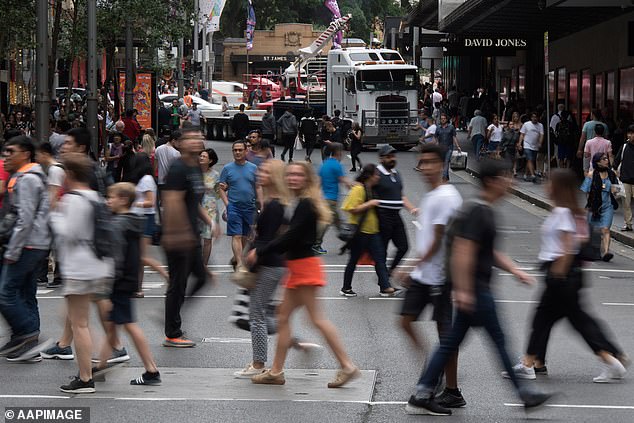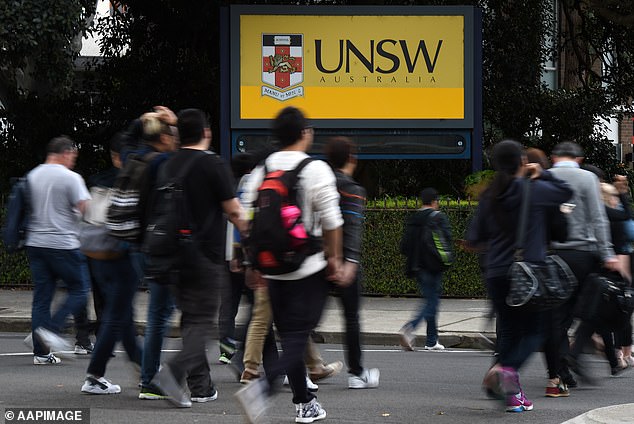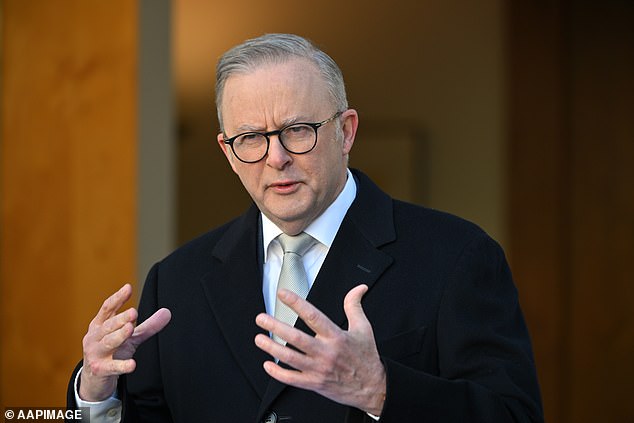Anthony Albanese’s government will fail to meet its goal of controlling immigration amid a housing crisis, with more than 400,000 new arrivals to Australia in the last financial year.
The government, in its budget in May last year, forecast that the number of foreigners moving to the country would fall to 315,000 in the 12 months to June under the new measures it introduced, although this figure was revised to 375,000 in December and 395,000 earlier this year.
However, Australian Bureau of Statistics data released on Thursday confirmed that there were 388,000 new arrivals in the country in the first nine months of the financial year alone, not counting the remaining four months.
Opposition Leader Peter Dutton said an influx of new residents into the country competing for accommodation was the reason house prices remained at record levels.
“This is why Australians can’t afford to buy a home, this is why rents have skyrocketed and this is why we’re in the situation we’re in today, with people living without secure housing,” Dutton said.
Home Secretary Murray Watt said migration had slowed thanks to government measures and data for the remaining four months of the financial year would show it had slowed further.
“We recognise that we need to ensure that the number of migrants arriving in Australia is sustainable, and that is exactly why we have taken a number of actions to reduce those numbers,” he said.
“We’re starting to see the results of that. The numbers that came out today are from March, so they’re a little bit behind. And of course, a number of the measures we’ve taken came into effect after March, so I would expect that we’ll see that number fall even further.”
The Albanese government said it would reduce the number of migrants entering Australia to 395,000, but new ABS data shows new arrivals will exceed 400,000 in the next financial year.

Opposition leader Peter Dutton said the influx of migrants was the reason housing was “unaffordable” in Australia.
Immigration hit a record high of 528,000 new arrivals in the country in 2022-23 after travel resumed following the Covid pandemic.
The government said this was a catch-up effect, as immigration plummeted during the two years of international border closures.
It has since declined steadily, though not at the rate the government had hoped, as the country continues to rely on international students and foreign workers to power the economy.
The chair of the government’s National Housing Supply and Affordability Council, Susan Lloyd-Hurwitz, argued that plans to allow 53,000 fewer international students from 2025 would not make it easier to access housing.
In August, the federal government announced it would set a cap of 270,000 international students in an attempt to reduce migration and ease pressure on the housing sector.
But in a speech to the National Press Club on Wednesday, Ms Lloyd-Hurwitz said the cap would not solve the problem.
“We really struggle to see how limiting the number of international students could have a significant impact on the housing system,” he said.
“It seems like it would be quite damaging to our second-largest export industry and would probably have very little effect on housing releases.”

The government is taking steps to limit the number of international students accepted into universities, but a senior official said this would not make a big difference to housing prices.
Universities could increase the number of foreign students they can host, but only if they increase student accommodation.
It is estimated that university students make up only four per cent of renters in Australia.
Ms Lloyd-Hurwitz said that while there might be other reasons why it would be necessary to limit the number of university students coming from abroad, housing was not one of them.
“It’s not true that international students are displacing tenants in our cities, that’s simply not true,” he said.
Opposition immigration spokesman Dan Tehan said the number of foreign students needed to be reduced.
“We’ve seen record numbers of international students… we’ll wait and see what the government’s measures actually lead to,” he told ABC Radio on Thursday.
According to the latest ABS figures, there were 509,750 migrants in the country in the 12 months to March.
New South Wales received 168,148 of them, 151,740 went to Victoria, 82,794 to Queensland and 64,902 to Western Australia.


